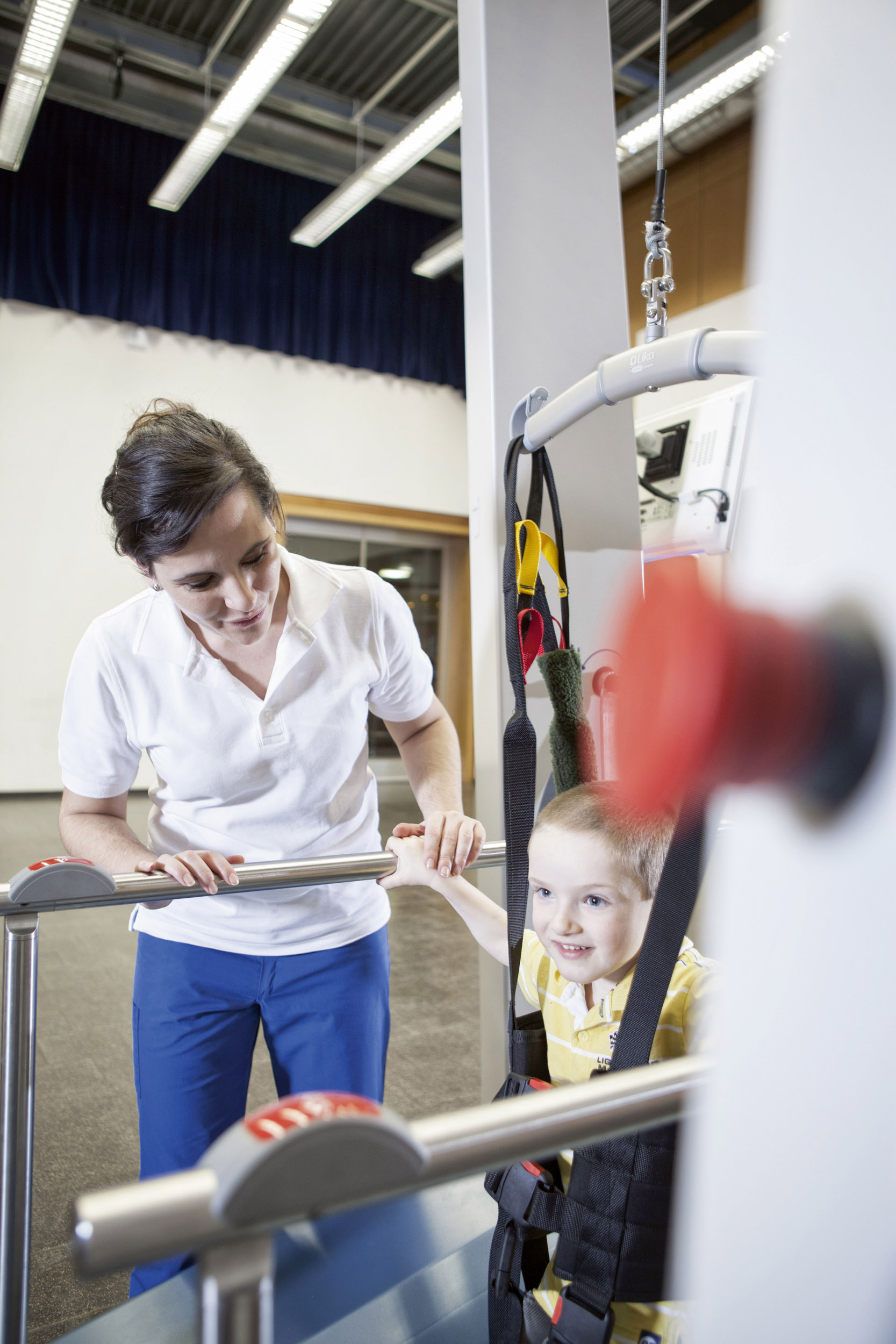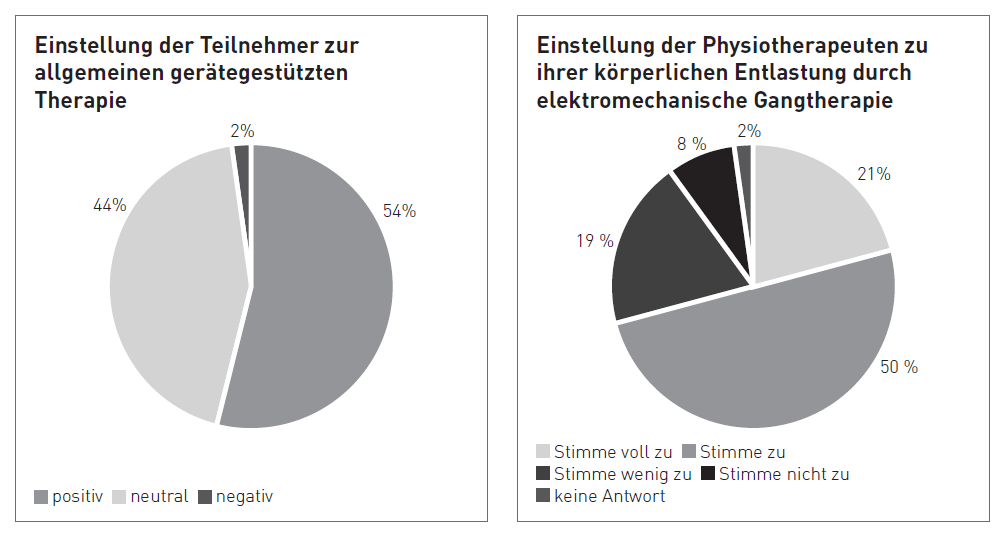
How do physiotherapists view electromechanical gait therapy? A recent study shows they see it as a valuable addition to conventional therapy—if proper training and clear therapeutic concepts are in place. Learn more about their perspective.

The benefits of end-effector-based gait therapy for stroke patients are already documented in the S2e-Guideline “Rehabilitation of mobility after stroke” (2015). When it comes to designing a therapy programme for patients who are initially unable to walk in the subacute stage after stoke, recommendation grade B (“should”) advises the use of end-effector-based gait therapy to improve their walking ability. However, in order to establish meaningful use of end-effector-based gait training in everyday clinical practice, it requires acceptance by the physiotherapists delivering the treatment. After all, it is the physiotherapist who selects the approach for delivering targeted therapy. It is assumed that physiotherapists will choose a new approach to therapy only if they themselves are convinced by it. If a clinic establishes a new therapy device, the physiotherapist must therefore be convinced by this new approach in order to use it expertly in everyday clinical practice.
The dissertation investigated the views and opinions of physiotherapists who in the future are expected to work with end-effector-based devices in everyday clinical practice. An evaluation took place of how to ensure successful introduction of devices.
To do this, a survey was carried out at two clinics with 48 physiotherapists. The physiotherapists were asked questions relating to experience, knowledge and views on electromechanical gait training.
The results of the investigation showed that the physiotherapists so far had little experience and knowledge of the devices. In particular, they emphasised that electromechanical gait therapy is an addition to conventional physiotherapy and will never replace hands-on therapy by a physiotherapist. According to the physiotherapists surveyed, the use of electromechanical gait trainers makes it possible to increase therapy intensity for the patient, while at the same time reducing physical exertion on the physiotherapist. Use of electromechanical devices is not expected to harm physiotherapist-patient contact. The physiotherapists indicate the need for training if these devices are to be introduced and recommend use by an expert team. In general, the physiotherapists surveyed deem electromechanical gait therapy to be in keeping with the times.
Overall, the physiotherapists surveyed are positive about the introduction of electromechanical devices and view electromechanical gait therapy as a possible complementary approach for inpatient treatment. It was shown that introducing electromechanical gait trainers for the patient can be key in terms of motor learning during therapy, because each therapy session can include a high repetition rate of gait cycles, which activates more plasticity and learning processes in the patient’s brain.
The study also demonstrated that a clinic can ensure the quality of its therapy by introducing electromechanical gait trainers. Electromechanical gait therapy should be made available as an additional therapy offer in addition to standard care. A possible side effect for the clinic is a saving on physiotherapists, but this is not the primary aim of introducing electromechanical gait trainers.
Moreover, a therapeutic concept for the introduction of electromechanical gait trainers in everyday clinical practice should be developed. In this therapy concept, electromechanical gait therapy should be listed as an additional and complementary offer, because conventional physiotherapy can be greatly supported with the use of new technologies. In the context of the therapy concept, the individual therapy design for the patient must also be mentioned. It must always depend on whether the patient can use electromechanical gait therapy, because not every patient benefits from this type of therapy. This is where the introduction of an assessment could be helpful when a patient is admitted. This assessment could be developed in further research.
The successful introduction of an electromechanical gait trainer in everyday clinical practice would necessarily require physiotherapists to know about scientifically proven approaches to therapy and they should also be trained in evaluating scientific studies. This is not currently the case with many physiotherapists. Also, only an expert team should perform electromechanical gait training. This too requires physiotherapists to be trained to use the devices. The physiotherapists delivering the treatment should know the possibilities and limitations of the devices so that they can respond accordingly during a patient’s course of therapy.
Future research will need to evaluate how all these conditions can be translated into everyday clinical practice. Only in this way can electromechanical gait training by physiotherapists be successfully translated into everyday clinical practice.


Related contents
Find related exciting contents in our media library.
Meet our specialists.
Are you interested in our solutions? Schedule a meeting with a Consultant to talk through your strategy and understand how TEHRA-Trainer can help you to advance rehabilitation.
You need to load content from reCAPTCHA to submit the form. Please note that doing so will share data with third-party providers.
More InformationYou are currently viewing a placeholder content from Turnstile. To access the actual content, click the button below. Please note that doing so will share data with third-party providers.
More Information